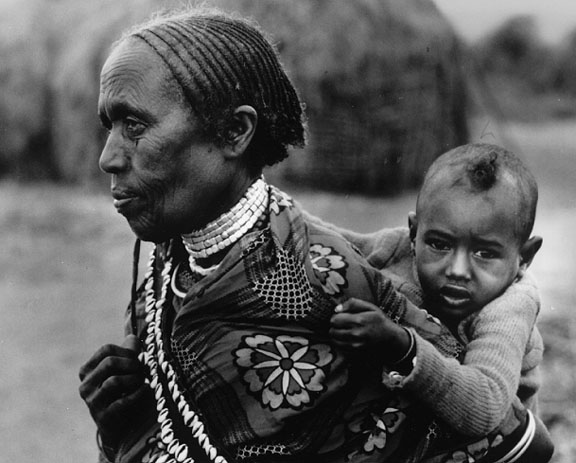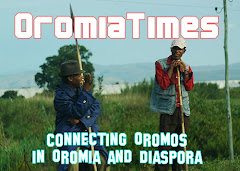Millions of children need homes, but barriers keep them from eager couples overseas
STEPHANIE NOLEN
From Wednesday's Globe and Mail
ADDIS ABABA — Last week, it was two little boys, each found abandoned in a dusty side street. Police turned the babies over to Ethiopia's child-welfare bureau, which in turn called Montegbosh Asmare. Within hours, she had begun the process of sending them to a new life with eager families in Europe, two of the 1,500 children who will be adopted from Ethiopia this year.
Adoption from this country -- interest in which has skyrocketed since the world's most famous adoptive parent, actor Angelina Jolie, adopted an Ethiopian baby girl last year -- is not without controversies. Even Ms. Asmare, who runs a foster home that cares for children until one of the dozen international adoption agencies in Ethiopia arranges a permanent placement overseas, is troubled by it.
"It's a matter of not having other options," she said. "We say, 'This is the last option. If you have children you can't care for, then intercountry adoption is the best thing.' But preferable would be . . . creating means so they can stay in their own country. Children are the most precious resource of a country, one every nation needs for its future, and it is a loss for them to go."
But as Ms. Asmare points out, Ethiopia has more orphaned children than it knows what to do with, an estimated five million of them. And in this country where annual income is just $110 (Canadian), there are few resources to care for them -- for example, no grants are available for foster-care givers. The impact of AIDS -- nearly two million Ethiopians are infected -- has frayed the traditional networks that might have seen these children fostered by relatives or neighbours. So in these circumstances, Ms. Asmare said, it is difficult to oppose sending the children to loving families abroad.
In fact, the big mystery is why more children don't leave Africa this way: Across the continent, there are 12 million orphans from HIV-AIDS alone, leaving aside the wars and famines and other catastrophes that claim parental lives. Yet of 53 countries in sub-Saharan Africa, international adoptions routinely take place only from Ethiopia, Sierra Leone and Liberia -- at best, a few thousand children a year.
Some countries, such as Nigeria and Sudan, expressly forbid the practice, while others, such as Kenya, Uganda and Tanzania, ostensibly allow it, but put such heavy demands on prospective parents -- such as a requirement that they live in the country for as long as several years to conclude the adoption process -- that it is effectively impossible.
South Africa, staggering under the burden of HIV-AIDS, is in the process of rewriting its adoption legislation to make the process easier for people within the country, but international adoption will remain dauntingly bureaucratic and complex.
In Ethiopia, on the other hand, the entire court process can be finished and a passport and visa issued in a matter of weeks after a child is cleared for adoption, providing the parents have their home study and police checks ready.
"I've been in 12 African countries to talk about adoption," said Cheryl Carter-Shotts, who directs the agency Americans for African Adoptions, one of the oldest agencies to work in Ethiopia. "In those countries, the people who work in orphanages are very interested in children being placed out of [the country] for adoption. But the people dealing on a day-to-day basis with the children don't get to make the law." Only Ethiopia has rewritten its legislation to streamline the process, she said.
Part of the issue appears to be cultural: Adoption by strangers is largely unknown in most African cultures, as are orphanages, and even the ravages of AIDS have done little to change that.
Countries such as Swaziland and Zambia, with thousands of orphans for whom there are no blood relations or close family friends left to act as surrogate parents, are facing a perplexing problem: Governments, the United Nations Children's Fund and child-care experts tend to agree that orphanages are not an appropriate response, but there is a visceral resistance on the part of regular people to adopting unknown children.
At the same time, there is a strong belief that the children should not leave their home country and culture -- even though in many cases they are left to live on the streets or raise themselves in households headed by nine-year-olds.
"The culture recognizes foster care. Fostering and placing children with families in their community is a huge part of the community in Africa, like aboriginal communities in Canada, but adoption is an entirely different kettle of fish," said Roberta Galbraith, director of Manitoba-based CAFAC Adoption Agency. "And it's going to take time until there is buy-in that adoption is a positive way of building a family and doesn't have to negate biological family ties."
Yet the fears on the part of African governments are not without justification. Ms. Carter-Shotts said that since Ms. Jolie's adoption heightened awareness of the availability of African babies, there has been a noticeable increase in corruption in the countries she deals with, with unscrupulous agents "buying" children from illiterate village women and local officials demanding money to process payments.
Ms. Asmare, who sends 60 children, mostly infants, to Europe each year, said the hardest part of her job is tracing the families of the children, such as the two infant boys, to make sure their parents are dead or truly can't be found, that there is no other relative who wishes to take the children or who will emerge from the woodwork to demand money after an adoption to foreigners has been arranged. Parents who feel they can't offer their children as much as foreigners can falsely present children as orphans, she said, and she dreads the idea of sending abroad a child who had family back home.
"I think any child with parents has the richest thing, however poor their parents are," she said.
Canadian adoptions from Africa have risen from 42 a decade ago to 105 last year, almost all of them from Ethiopia. CAFAC now has 90 families in the process, and Ms. Galbraith said that as awareness of the relative ease of adopting from Ethiopia has grown, there has been a surge in interest.
While a family seeking to adopt a Caucasian child under a year old in Canada will wait 10 to 12 years, she said, they can have an Ethiopian child that age in about 18 months. The cost, including the legal process in Ethiopia, fostering for the child while that is under way, and Canadian requirements, typically totals between $15,000 and $20,000.
But even with the surge in interest, Ms. Galbraith noted, the government in Ethiopia is left struggling to meet the needs of millions of children. "Adoptions don't even scratch the surface."
Subscribe to:
Post Comments (Atom)

















2 comments:
Who knows where to download XRumer 5.0 Palladium?
Help, please. All recommend this program to effectively advertise on the Internet, this is the best program!
I'm not sure exactly why but this web site is loading extremely slow for me. Is anyone else having this issue or is it a problem on my end? I'll check back later
and see if the problem still exists.
My site ... forum viagra
Post a Comment